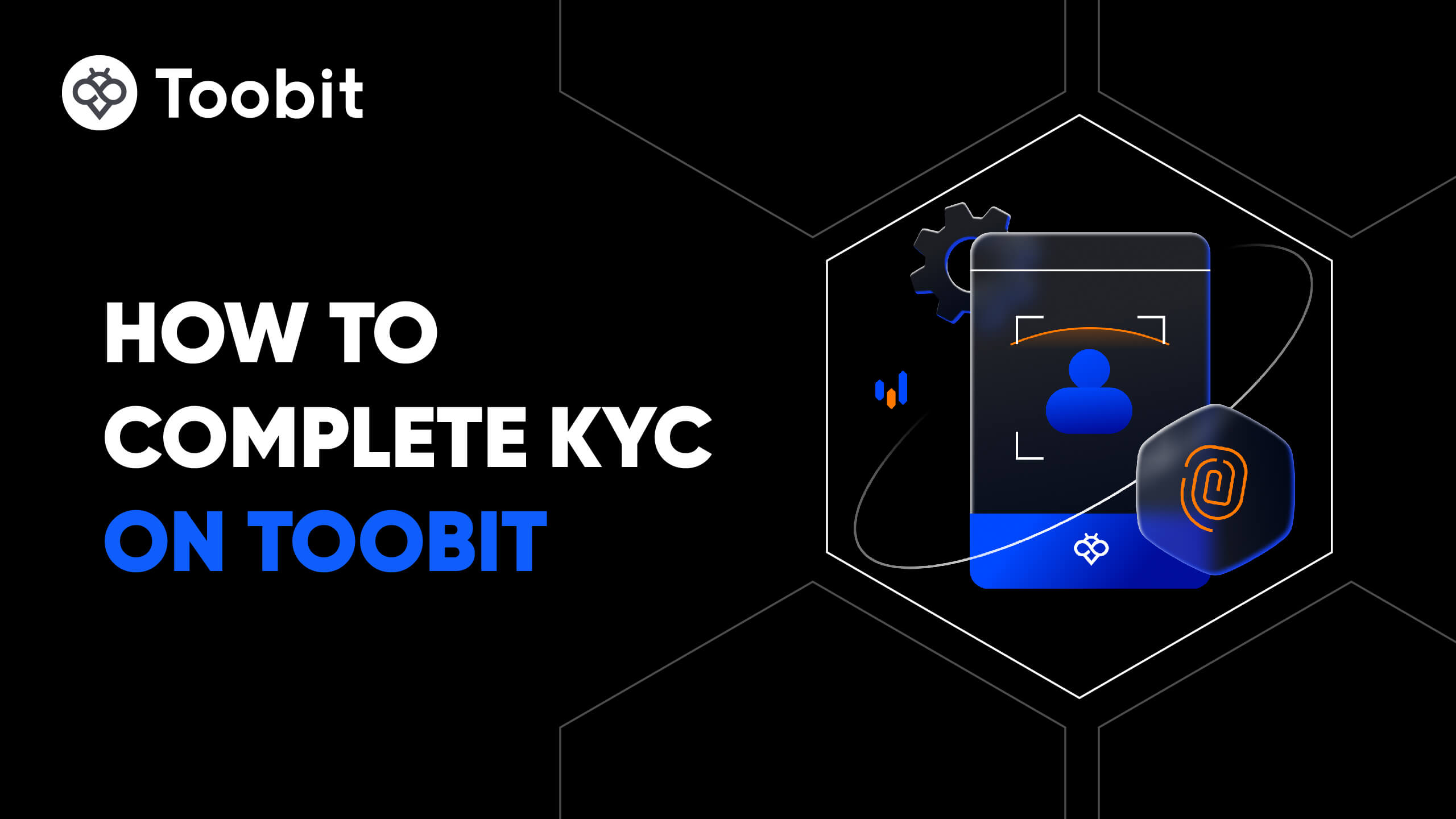Preço de Bitcoin
BTCInformações do mercado de Bitcoin
Preço ao vivo de Bitcoin hoje em USD
Quanto vale 1 BTC em ?
Sobre Bitcoin(BTC)
Histórico de preços de Bitcoin
Por que o preço de Bitcoin sempre oscila?
Quais fatores afetam o desempenho dos preços de Bitcoin?
Preços globais de Bitcoin
Como comprar Bitcoin
Junte-se ao Toobit agora!
Cadastre-se na Toobit com seu e-mail/número de celular e país de residência e crie uma senha forte para proteger sua conta.
Verifique sua identidade
Complete a verificação de identidade enviando seus dados pessoais e um documento de identificação com foto válido.
Adicione um método de pagamento e compre Bitcoin (BTC)
Adicione um cartão de crédito/débito ou conta bancária após verificar sua conta Toobit. Use várias opções de pagamento para comprar Bitcoin na Toobit.
Negocie contratos futuros perpétuos de BTC
Após se cadastrar na Toobit e comprar USDT ou tokens BTC, você pode começar a fazer trade de Derivatives, incluindo futuros BTC e Margin trading para aumentar sua renda.
Participe do Copy Trading de BTC com Traders Líderes
Após se registrar na Toobit e comprar com sucesso USDT ou tokens BTC, você também pode começar o copy trading seguindo Traders Líderes.
Onde posso comprar Bitcoin?
Compre cripto no app da Toobit
Cadastre-se em poucos minutos para comprar cripto via cartão de crédito ou transferência bancária.
Negocie na Toobit
Deposite suas criptomoedas na Toobit e aproveite alta liquidez e taxas de negociação baixas.
Seção de vídeo — verificação rápida, negociação rápida

Como concluir a identificação na Toobit e se proteger contra fraudes
- 1.Entre na sua conta Toobit.
- 2.Se você é novo na Toobit, assista ao nosso tutorial sobre como criar uma conta.
- 3.Clique no ícone de perfil no canto superior direito da barra de navegação e depois toque na página de Identificação.
Perguntas Frequentes Sobre Bitcoin (BTC)
Quem criou o Bitcoin?
O Bitcoin foi criado por Satoshi Nakamoto, um desenvolvedor pseudônimo que publicou o whitepaper do Bitcoin em 2008. Embora a verdadeira identidade de Nakamoto permaneça desconhecida, ele lançou o primeiro bloco de Bitcoin em 2009, marcando o nascimento da tecnologia blockchain. Desde então, desenvolvedores como Gavin Andresen e mais de 750 colaboradores no GitHub continuaram a aprimorar e manter a rede Bitcoin.Como funciona a mineração de Bitcoin e o que é a 'redução pela metade'?
A mineração de Bitcoin é o processo de validação de transações e segurança da rede através do Proof-of-Work. Os mineradores competem para resolver quebra-cabeças matemáticos complexos, e o primeiro a ter sucesso cria um novo bloco na blockchain. Em troca, eles recebem uma recompensa em bloco em Bitcoin recém-criado. A redução pela metade é um evento programado que corta essa recompensa pela metade aproximadamente a cada quatro anos. Este mecanismo deflacionário está embutido no código do Bitcoin para controlar a oferta e garantir que o número total de Bitcoin nunca exceda 21 milhões.Quando é a redução pela metade do Bitcoin?
A última redução pela metade do Bitcoin ocorreu em 20 de abril de 2024. Uma redução pela metade do Bitcoin ocorre aproximadamente a cada quatro anos, ou a cada 210.000 blocos minerados, como parte do design original de Satoshi Nakamoto para controlar a oferta. Cada evento de redução pela metade corta a recompensa do bloco pela metade, desacelerando a criação de novos Bitcoin e estendendo o ciclo de recompensas para os mineradores. Este mecanismo embutido limita a oferta total a 21 milhões de moedas, ajudando a manter a escassez e conter a inflação.Quando é a próxima redução pela metade do Bitcoin?
A redução pela metade do Bitcoin é um evento que ocorre aproximadamente a cada quatro anos, ou após 210.000 blocos serem minerados, reduzindo a taxa de criação de novos Bitcoin. A redução mais recente ocorreu em abril de 2024, cortando a recompensa do bloco para 3,125 BTC por bloco. A próxima redução pela metade do Bitcoin é esperada para 2028.Quantos Bitcoins existem?
O Bitcoin tem uma oferta máxima fixa de 21 milhões de moedas, definida por seu código original para garantir escassez e proteger contra a inflação. Novos Bitcoin entram em circulação através da mineração, um processo onde computadores poderosos validam transações e adicionam novos blocos à blockchain.A recompensa da mineração é reduzida pela metade aproximadamente a cada quatro anos, desacelerando a taxa de criação de novas moedas. Até agora, mais de 19,7 milhões de Bitcoin foram minerados, restando menos de 2 milhões a serem produzidos. Esta oferta limitada é uma das principais razões pelas quais o Bitcoin é frequentemente chamado de ouro digital.O Bitcoin é um bom investimento?
O Bitcoin é frequentemente considerado um investimento de alto risco e alta recompensa devido à volatilidade do preço do BTC e às dinâmicas de mercado em evolução. Embora tenha proporcionado retornos fortes a longo prazo, continua vulnerável a oscilações bruscas de preço, incertezas regulatórias e potenciais riscos de segurança.Muitos investidores veem o Bitcoin como uma proteção contra a inflação e uma ferramenta para diversificação de portfólio, especialmente com o aumento dos ETFs de criptomoedas e a crescente participação institucional. No entanto, pode não ser adequado para todos. Se o Bitcoin é um bom investimento, depende em última análise da sua tolerância ao risco, objetivos financeiros e horizonte de investimento.Sempre faça sua própria pesquisa e considere consultar um consultor financeiro licenciado antes de investir em criptomoedas.Quantos Satoshis somam 1 BTC?
Um Bitcoin (BTC) é igual a 100.000.000 Satoshis. Um Satoshi, nomeado em homenagem ao misterioso criador do Bitcoin, Satoshi Nakamoto, permite que transações sejam feitas em frações extremamente pequenas.Este alto nível de divisibilidade torna o Bitcoin prático para microtransações, negociações e poupanças, mesmo à medida que seu valor continua a aumentar ao longo do tempo.Quem é Satoshi Nakamoto?
Satoshi Nakamoto é o indivíduo ou grupo pseudônimo responsável pela criação do Bitcoin. Eles escreveram o whitepaper original do Bitcoin e desenvolveram a primeira versão do software Bitcoin. Apesar de fundar toda a indústria de criptomoedas, a verdadeira identidade de Satoshi permanece um dos maiores mistérios na tecnologia e finanças modernas.Qual é o legado de Satoshi Nakamoto?
Independentemente de sua identidade, o legado de Satoshi Nakamoto é inegável. Eles resolveram o antigo "problema do gasto duplo" em moeda digital sem depender de uma autoridade central, criando a primeira criptomoeda descentralizada bem-sucedida e desencadeando a revolução do blockchain e Web3. Os aproximadamente 1,1 milhão de Bitcoins minerados por Satoshi, que nunca foram gastos, permanecem como um monumento silencioso à sua criação, simbolizando tanto uma riqueza imensa quanto um compromisso duradouro com um sistema sem confiança.O que é o whitepaper do Bitcoin e por que é importante?
O whitepaper do Bitcoin, intitulado "Bitcoin: A Peer-to-Peer Electronic Cash System", é o documento fundamental escrito pelo pseudônimo Satoshi Nakamoto. Publicado em 31 de outubro de 2008, ele delineou o plano para a primeira criptomoeda descentralizada bem-sucedida do mundo. O documento é significativo porque introduziu uma solução inovadora para o antigo "problema do gasto duplo" em moeda digital, eliminando a necessidade de uma autoridade central confiável e lançando as bases para toda a indústria de criptomoedas e blockchain.O que é o Gráfico Arco-Íris do Bitcoin?
O Gráfico Arco-Íris do Bitcoin é uma ferramenta visual de longo prazo que usa uma escala logarítmica para ilustrar as tendências históricas de preço do Bitcoin. Cada faixa colorida representa uma zona de avaliação diferente, variando de azul (subvalorizado) a vermelho (sobrevalorizado), ajudando os usuários a avaliar rapidamente o sentimento do mercado ao longo do tempo.Embora não seja destinado a previsões precisas de preço do BTC, o Gráfico Arco-Íris fornece uma maneira simples de identificar potenciais zonas de compra e venda com base no desempenho passado do Bitcoin.O que é BTC/USDT?
BTC/USDT é um par de negociação popular que reflete a taxa de câmbio entre Bitcoin (BTC) e Tether (USDT), uma stablecoin atrelada ao dólar americano. Ele permite que os traders comprem ou vendam Bitcoin usando USDT, oferecendo uma maneira estável e conveniente de acessar o mercado de criptomoedas sem converter para moeda fiduciária.BTC/USDT é um dos pares mais negociados ativamente em exchanges como a Toobit, valorizado por sua alta liquidez e relativa estabilidade de preço do BTC.Como o Bitcoin difere da moeda fiduciária tradicional?
As moedas fiduciárias tradicionais são emitidas e regulamentadas por autoridades centrais, como bancos centrais. Sua oferta e valor podem ser influenciados por políticas governamentais e condições econômicas mais amplas.O Bitcoin, por outro lado, opera sem um intermediário central. Ele se baseia em prova criptográfica e consenso de rede para verificar transações e gerenciar emissões, garantindo transparência, escassez e imutabilidade.Quais são as principais diferenças entre o Bitcoin e as finanças tradicionais (TradFi)?
O whitepaper do Bitcoin o apresentou como uma alternativa descentralizada às finanças tradicionais. As principais diferenças incluem: 1. Descentralização vs. centralização: O Bitcoin opera em uma rede peer-to-peer sem bancos centrais ou intermediários. 2. Acesso sem permissão: Qualquer pessoa pode usar ou construir no Bitcoin sem precisar de aprovação. 3. Transparência: Todas as transações são registradas publicamente na blockchain. 4. Oferta fixa: A oferta total de Bitcoin é limitada a 21 milhões, ao contrário das moedas fiduciárias, que podem ser impressas indefinidamente.O que é a blockchain e por que é essencial para a confiabilidade do Bitcoin?
A blockchain é um livro-razão imutável e com registro de tempo das transações que forma a base do modelo de confiança do Bitcoin.Estrutura: As transações são agrupadas em blocos, e cada novo bloco é criptograficamente vinculado ao anterior, criando uma cadeia segura de dados.Imutabilidade: Uma vez que um bloco é adicionado, seus registros são quase impossíveis de alterar. Isso garante transparência, previne o gasto duplo e elimina a necessidade de uma autoridade central.Qual é o papel da mineração no sistema Bitcoin e como ela garante a segurança?
A mineração é o processo competitivo em que os nós validam transações e criam novos blocos. Ela serve a dois propósitos principais: Segurança da rede: Os mineradores verificam transações pendentes, agrupam-nas em blocos e resolvem um quebra-cabeça computacionalmente intensivo conhecido como Proof-of-Work. Este processo garante que a blockchain permaneça à prova de adulteração e confiável. Emissão de novos Bitcoin: O primeiro minerador a resolver o quebra-cabeça adiciona o bloco à cadeia e ganha Bitcoins recém-criados (a recompensa do bloco) junto com as taxas de transação. Este incentivo econômico motiva os mineradores a manter a segurança da rede.Como as assinaturas digitais garantem uma transação de Bitcoin e provam a propriedade?
As assinaturas digitais são um mecanismo de segurança fundamental no Bitcoin, garantindo que apenas o proprietário legítimo dos fundos possa gastá-los.Mecanismo: Ao enviar Bitcoin, o usuário gera uma assinatura digital única para a transação usando sua chave privada.Prova: Esta assinatura verifica criptograficamente a propriedade sem revelar a chave privada, eliminando a necessidade de verificação de identidade tradicional e garantindo que as transações sejam seguras e não repudiáveis.O que significa a descentralização do Bitcoin para governança e controle?
A descentralização significa que nenhuma entidade única, como um banco, governo ou corporação, controla a rede Bitcoin. Governança: Qualquer mudança nas regras do Bitcoin requer consenso da maioria dos participantes da rede, incluindo mineradores, nós e desenvolvedores. Controle: O livro-razão distribuído, protegido por Proof-of-Work, garante que ninguém possa inflar arbitrariamente a oferta de dinheiro, reverter transações ou desligar a rede. Isso sustenta o valor do Bitcoin como uma forma de dinheiro resistente à censura.Como o whitepaper do Bitcoin aborda o conceito de anonimato? O Bitcoin é realmente anônimo?
O whitepaper do Bitcoin explica o anonimato através do uso de chaves públicas (endereços de Bitcoin), mas observa que esse anonimato tem limites. Pseudonimato: As transações são públicas, mas exibem apenas endereços de Bitcoin, não identidades do mundo real. Os usuários são, portanto, pseudônimos em vez de totalmente anônimos. Limitação: Se um endereço for vinculado a uma pessoa, todas as transações passadas e futuras desse endereço podem ser rastreadas. O Bitcoin é transparente por design e não completamente anônimo.O Bitcoin é um bom reserva de valor e por que é chamado de 'ouro digital'?
Embora o whitepaper do Bitcoin o apresente como um sistema de dinheiro eletrônico, suas propriedades — como durabilidade, portabilidade, divisibilidade, uniformidade, oferta limitada e ampla aceitabilidade, levaram muitos a considerá-lo ouro digital.Sua oferta fixa e deflacionária o torna resistente à inflação, uma característica chave de uma reserva de valor. Esta perspectiva se tornou uma tese central de investimento, posicionando o Bitcoin como uma potencial proteção contra sistemas financeiros tradicionais e um ativo central em portfólios modernos.Como é mantida a segurança da rede Bitcoin a longo prazo?
A segurança a longo prazo do Bitcoin é mantida através de vários mecanismos chave. 1. Proof-of-Work: Isso torna ataques à rede computacionalmente inviáveis. 2. Incentivos econômicos: Os mineradores são recompensados por participação honesta, promovendo a integridade da rede. 3. Rede distribuída: Sua estrutura descentralizada elimina qualquer ponto único de falha. 4. Criptografia: Algoritmos criptográficos fortes protegem todas as transações, e a rede permanece segura enquanto nós honestos controlarem coletivamente mais poder computacional do que potenciais atacantes.O Bitcoin pode escalar para se tornar um sistema de pagamento global para transações diárias?
O whitepaper original reconhece que a escalabilidade pode ser um desafio. Ele sugere que a maioria das transações poderia ocorrer fora da cadeia através de canais de pagamento separados, com a blockchain principal usada para liquidar esses canais. Este conceito lançou as bases para soluções de Camada 2, como a Lightning Network, que permitem microtransações rápidas e de baixo custo e ajudam a resolver a escalabilidade para o uso do Bitcoin como dinheiro digital.Em que fuso horário o preço listado do BTC é atualizado?
O preço do BTC mostrado na página é atualizado em tempo real usando UTC (Tempo Universal Coordenado). Isso garante consistência entre usuários globais. Se você estiver localizado em um fuso horário diferente, seu horário local pode diferir — verifique o carimbo de data/hora antes de referenciar o preço mais recente do Bitcoin.Por que o preço do Bitcoin pode diferir ligeiramente entre as exchanges?
Porque cada exchange tem seu próprio livro de ordens, liquidez e volume de negociação, o preço do Bitcoin pode variar ligeiramente de uma plataforma para outra. Essa diferença surge das dinâmicas de oferta e demanda em cada exchange individual, bem como de taxas ou atrasos que podem se aplicar a certos pares de negociação.O preço do BTC exibido pode ser usado para converter outras moedas (por exemplo, EUR, JPY)?
O preço mostrado é denominado em USD. Se você precisar obter um preço equivalente de Bitcoin em outra moeda fiduciária (por exemplo, EUR, JPY), você precisará aplicar a taxa de câmbio atual de USD para sua moeda — ou usar uma ferramenta de conversão de moeda para uma conversão precisa.Com que frequência o preço ao vivo do Bitcoin é atualizado na Toobit?
O feed de preço ao vivo do Bitcoin é atualizado continuamente (à medida que as negociações acontecem) para refletir a atividade mais recente do mercado. Isso garante que os usuários vejam mudanças de preço quase em tempo real, em vez de cotações atrasadas ou obsoletas.O preço do BTC mostrado inclui taxas de negociação ou slippage?
Não, o preço do BTC exibido representa a taxa de mercado para 1 Bitcoin (BTC). Ele não inclui quaisquer taxas de negociação, taxas de rede ou slippage potencial. Os custos reais podem variar dependendo do tipo de ordem, método de pagamento ou condições de rede prevalecentes.Qual é a diferença entre "Último Preço" e "Capitalização de Mercado" quando vejo a página de preço do Bitcoin?
O "Último Preço" refere-se ao preço da transação mais recente para o Bitcoin (ou seja, o que alguém pagou por último). "Capitalização de Mercado" é o valor total de todos os Bitcoins em circulação (oferta atual × último preço), dando uma visão geral da avaliação total de mercado do Bitcoin.Por que o preço do BTC muda a cada segundo?
O preço do BTC muda constantemente porque o Bitcoin é negociado 24/7 em exchanges globais. Cada ordem de compra e venda afeta a oferta e a demanda, o que move diretamente o preço do Bitcoin para cima ou para baixo em tempo real. Ao contrário das ações, não há sino de fechamento. Como o Bitcoin tem uma oferta total fixa de 21.000.000 BTC, a volatilidade do preço é impulsionada puramente pelo comportamento do mercado, liquidez, notícias e fatores macroeconômicos.Quais fatores têm o maior impacto a longo prazo no preço do Bitcoin?
As tendências de preço do Bitcoin a longo prazo são principalmente impulsionadas por:Ciclos de redução pela metade do BitcoinAdoção institucionalCondições macroeconômicas (inflação, taxas de juros)Desenvolvimentos regulatóriosSegurança da rede e taxa de hashComo o Bitcoin tem uma oferta total limitada de apenas 21.000.000 BTC, a escassez desempenha um papel importante em empurrar o preço do BTC para cima ao longo de horizontes de tempo mais longos.Como é calculado o preço do BTC em diferentes exchanges?
O preço do BTC que você vê na maioria das plataformas é uma média agregada de preços em várias exchanges, ponderada pelo volume de negociação. No entanto, devido a diferenças de liquidez e demanda regional, o preço do Bitcoin pode variar ligeiramente entre plataformas. Independentemente da exchange, o ativo circulante é o mesmo Bitcoin com uma oferta máxima de 21.000.000 BTC.Por que o preço do Bitcoin reage tão fortemente a eventos de notícias?
O Bitcoin é altamente sensível a:Aprovações de ETFRegulamentações governamentaisDecisões de taxas de jurosHacks ou colapsos de exchangesAnúncios de investimentos institucionaisComo o preço do BTC reflete o sentimento imediato do mercado, até mesmo uma manchete importante pode desencadear grandes oscilações de preço. A oferta limitada de 21.000.000 BTC amplifica essas reações, já que novas moedas não podem ser criadas em resposta à demanda.O preço do Bitcoin pode ser manipulado?
Movimentos de preço de BTC a curto prazo podem ser influenciados por:Grandes negociações de "baleias"Liquidez de formadores de mercadoLiquidações de derivativosComportamento de negociação coordenadoNo entanto, a manipulação a longo prazo se torna cada vez mais difícil à medida que a capitalização de mercado do Bitcoin cresce e a participação global se expande. A oferta limitada de 21.000.000 BTC também restringe a inflação artificial do ativo.Por que o preço do BTC frequentemente cai durante liquidações de alta alavancagem?
Quando os traders usam alavancagem, até mesmo pequenos movimentos de preço do Bitcoin podem desencadear liquidações forçadas. Durante grandes eventos de liquidação, ordens de venda massivas inundam as exchanges, causando quedas temporárias acentuadas no preço do BTC. Isso não afeta a oferta total de Bitcoin de 21.000.000 BTC, apenas seu valor de mercado a curto prazo.O preço do Bitcoin ainda está subvalorizado em comparação com sua oferta total?
Muitos investidores de longo prazo acreditam que o Bitcoin permanece subvalorizado porque:A adoção global ainda está no inícioA inflação fiduciária continua aumentandoA exposição institucional está se expandindoA oferta é limitada a apenas 21.000.000 BTCA partir de um modelo de avaliação baseado em escassez, o preço do BTC pode aumentar significativamente à medida que a demanda continua a crescer enquanto a oferta permanece fixa.Quais são as principais diferenças entre Bitcoin e finanças tradicionais (TradFi)?
O whitepaper do Bitcoin o apresentou como uma alternativa descentralizada às finanças tradicionais. As principais diferenças incluem: 1. Descentralização vs. centralização: O Bitcoin opera em uma rede peer-to-peer sem bancos centrais ou intermediários. 2. Acesso sem permissão: Qualquer pessoa pode usar ou construir sobre o Bitcoin sem precisar de aprovação. 3. Transparência: Todas as transações são registradas publicamente no blockchain. 4. Oferta fixa: O fornecimento total de Bitcoin é limitado a 21 milhões, ao contrário das moedas fiduciárias, que podem ser impressas indefinidamente.O que é a blockchain e por que é essencial para a confiabilidade do Bitcoin?
A blockchain é um livro-razão imutável e com registro de tempo das transações que forma a base do modelo de confiança do Bitcoin.Estrutura: As transações são agrupadas em blocos, e cada novo bloco é criptograficamente ligado ao anterior, criando uma cadeia de dados segura.Imutabilidade: Uma vez que um bloco é adicionado, seus registros são quase impossíveis de alterar. Isso garante transparência, previne o gasto duplo e elimina a necessidade de uma autoridade central.Qual é o papel da mineração no sistema Bitcoin e como ela garante a segurança?
A mineração é o processo competitivo em que os nós validam transações e criam novos blocos. Ela serve a dois propósitos principais: Segurança da rede: Os mineradores verificam transações pendentes, agrupam-nas em blocos e resolvem um quebra-cabeça computacionalmente intensivo conhecido como Prova de Trabalho. Este processo garante que a blockchain permaneça à prova de adulterações e confiável. Emissão de novos Bitcoins: O primeiro minerador a resolver o quebra-cabeça adiciona o bloco à cadeia e ganha Bitcoins recém-criados (a recompensa do bloco) juntamente com as taxas de transação. Este incentivo econômico motiva os mineradores a manter a segurança da rede.Como as assinaturas digitais garantem a segurança de uma transação de Bitcoin e comprovam a propriedade?
As assinaturas digitais são um mecanismo de segurança fundamental no Bitcoin, garantindo que apenas o proprietário legítimo dos fundos possa gastá-los.Mecanismo: Ao enviar Bitcoin, o usuário gera uma assinatura digital única para a transação usando sua chave privada.Prova: Esta assinatura verifica criptograficamente a propriedade sem revelar a chave privada, eliminando a necessidade de verificação de identidade tradicional e garantindo que as transações sejam seguras e não repudiáveis.O que significa a descentralização do Bitcoin para a governança e controle?
Descentralização significa que nenhuma entidade única, como um banco, governo ou corporação, controla a rede Bitcoin. Governança: Quaisquer alterações nas regras do Bitcoin exigem consenso da maioria dos participantes da rede, incluindo mineradores, nós e desenvolvedores. Controle: O livro-razão distribuído, protegido por Prova de Trabalho, garante que ninguém possa inflacionar arbitrariamente a oferta de dinheiro, reverter transações ou encerrar a rede. Isso sustenta o valor do Bitcoin como uma forma de dinheiro resistente à censura.Como o whitepaper do Bitcoin aborda o conceito de anonimato? O Bitcoin é realmente anônimo?
O whitepaper do Bitcoin explica o anonimato através do uso de chaves públicas (endereços de Bitcoin), mas observa que esse anonimato tem limites. Pseudonimato: As transações são públicas, mas exibem apenas endereços de Bitcoin, não identidades do mundo real. Os usuários são, portanto, pseudônimos em vez de totalmente anônimos. Limitação: Se um endereço for alguma vez vinculado a uma pessoa, todas as transações passadas e futuras desse endereço podem ser rastreadas. O Bitcoin é transparente por design e não completamente anônimo.O Bitcoin é uma boa reserva de valor e por que é chamado de 'ouro digital'?
Embora o whitepaper do Bitcoin o apresente como um sistema de dinheiro eletrônico, as propriedades do Bitcoin—como durabilidade, portabilidade, divisibilidade, uniformidade, oferta limitada e ampla aceitabilidade, levaram muitos a considerá-lo ouro digital.Sua oferta fixa e deflacionária o torna resistente à inflação, uma característica chave de uma reserva de valor. Essa perspectiva tornou-se uma tese central de investimento, posicionando o Bitcoin como uma potencial proteção contra sistemas financeiros tradicionais e um ativo central em portfólios modernos.Como é mantida a segurança da rede Bitcoin a longo prazo?
A segurança a longo prazo do Bitcoin é mantida através de vários mecanismos chave. 1. Prova de Trabalho: Isso torna os ataques à rede computacionalmente inviáveis. 2. Incentivos econômicos: Os mineradores são recompensados pela participação honesta, promovendo a integridade da rede. 3. Rede distribuída: Sua estrutura descentralizada elimina qualquer ponto único de falha. 4. Criptografia: Algoritmos criptográficos fortes garantem todas as transações, e a rede permanece segura enquanto os nós honestos controlarem coletivamente mais poder computacional do que potenciais atacantes.O Bitcoin pode escalar para se tornar um sistema de pagamento global para transações diárias?
O whitepaper original reconhece que a escalabilidade pode ser um desafio. Sugere que a maioria das transações poderia ocorrer fora da cadeia através de canais de pagamento separados, com a blockchain principal sendo usada para liquidar esses canais. Este conceito lançou as bases para soluções de Camada 2, como a Lightning Network, que permitem microtransações rápidas e de baixo custo e ajudam a resolver a escalabilidade para o uso do Bitcoin como dinheiro digital.


